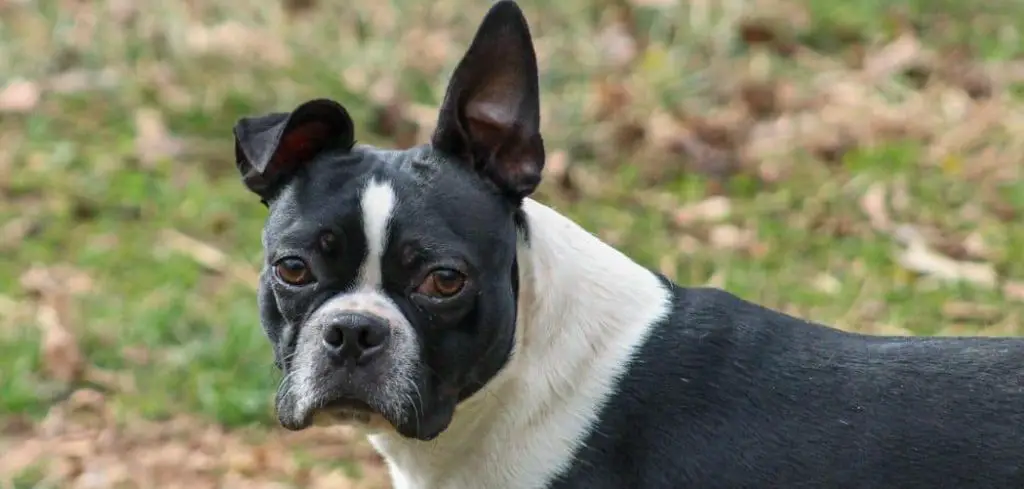When your dog starts dry heaving and refuses to eat, it’s a sign that something isn’t right. Dry heaving—also called retching—is when a dog tries to vomit but nothing comes up.
Combined with a lack of appetite, this symptom could point to anything from mild nausea to a potentially life-threatening condition like bloat.
We outline what may cause a dog to dry heave and not eat, how to respond, and when to get help from your vet.
Dog Dry Heaving and Not Eating — Why It Happens
When a dog is dry heaving and not eating, it may be due to nausea, throat irritation, kennel cough, foreign object obstruction, gastric dilatation-volvulus (bloat), gastrointestinal upset, or respiratory illness. These symptoms often signal discomfort, pain, or inflammation that suppresses appetite and triggers the gag reflex.

Dog Dry Heaving and Not Eating: Common Causes
1. Nausea or Empty Stomach
Just like in humans, dogs can experience nausea that leads to dry heaving and food refusal.
This might happen early in the morning or after long gaps between meals, especially if stomach acid builds up.
Other signs include:
Lip licking
Excessive swallowing
Drooling
Eating grass and then retching
Offering small, frequent meals and avoiding long fasting periods may help prevent future episodes—but chronic nausea should be addressed by a vet.
Related: Dog vomiting and not eating (Causes and when to worry)
2. Gastric Dilatation-Volvulus (Bloat)
Bloat is one of the most serious emergencies in dogs, particularly in deep-chested breeds. It occurs when the stomach fills with gas and twists, cutting off blood supply.
Early signs can include dry heaving without producing vomit, abdominal distension, restlessness, and refusal to eat.
Act fast if your dog shows:
Swollen belly
Repeated, non-productive retching
Pale gums
Weakness or collapse
This is a life-threatening emergency. Head to the vet immediately if you suspect bloat.
3. Foreign Object in Throat or Stomach
If your dog swallowed a toy, bone, or non-food item, it might become lodged in the throat or gastrointestinal tract, triggering dry heaving and appetite loss.
Watch for:
Gagging or pawing at the mouth
Coughing or choking
Vomiting attempts without success
Drooling or discomfort after eating
Endoscopy or imaging may be needed to locate and remove the object.
4. Kennel Cough or Throat Irritation
Kennel cough and other upper respiratory infections can cause persistent dry coughing or gagging that mimics dry heaving. If your dog’s throat is inflamed, they may avoid food due to pain.
Common symptoms:
Honking cough
Gagging after exercise
Mild nasal discharge
Fatigue and disinterest in eating
Most cases resolve in 1–2 weeks, but your vet may recommend antibiotics or anti-inflammatories.
5. Gastrointestinal Upset or Inflammation
Dogs may dry heave and not eat if they’re dealing with gastritis, acid reflux, pancreatitis, or intestinal inflammation.
These conditions cause discomfort and can trigger repeated retching without food intake.
Signs to look for:
Diarrhea or soft stools
Lethargy
Audible stomach gurgling
Curling up or lying in a hunched posture
Your vet may suggest a bland diet, anti-nausea meds, or GI protectants depending on the cause.
6. Tonsillitis or Pharyngitis
Infections or inflammation in the tonsils or throat may trigger dry heaving when swallowing.
Dogs experiencing this often avoid food to prevent discomfort.
Symptoms:
Thick saliva or drooling
Coughing or retching
Slow or careful chewing
Refusing dry food but interested in soft food
Tonsillitis is typically treated with antibiotics and rest.
7. Respiratory Illness or Nasal Blockage
Conditions like rhinitis, sinus infections, or nasal tumors can cause dogs to swallow mucus or experience postnasal drip—leading to gagging, dry heaving, and appetite loss.
Indicators include:
Noisy breathing
Sneezing
Clear or bloody nasal discharge
Head tilting or nose rubbing
Your vet may recommend imaging or lab tests to diagnose respiratory issues correctly.
What to Do If Your Dog Is Dry Heaving and Not Eating
If your dog is stable and breathing normally, here are supportive care tips to try at home:
Offer small portions of bland food like boiled chicken and rice
Encourage hydration with water or unsalted broth
Limit physical activity and keep them resting in a quiet area
Use a humidifier to soothe any throat irritation
Avoid giving bones or chew toys until the cause is clear
Monitor closely—dry heaving can escalate quickly, especially if caused by an obstruction or bloat.
When to Call or Visit Your Vet
Seek immediate veterinary care if:
Your dog is dry heaving repeatedly with no relief
They have a swollen abdomen or signs of bloat
They haven’t eaten in over 24 hours
Breathing becomes labored or noisy
There are vomiting, diarrhea, or signs of pain
Your vet may run X-rays, blood tests, or an ultrasound to identify the root issue.
Read more: Dog dry nose and not eating (Here’s why)
Key Takeaway
If your dog is dry heaving and not eating, it’s a clear sign that something’s wrong—whether it’s a temporary issue like nausea or something more serious like bloat or a blockage. Always monitor your dog’s breathing, energy level, and any additional symptoms to guide your decision.
When in doubt, call your vet. Acting quickly can make all the difference, especially in emergencies. With your attentiveness and timely support, your dog can recover safely and get back to feeling their best.
